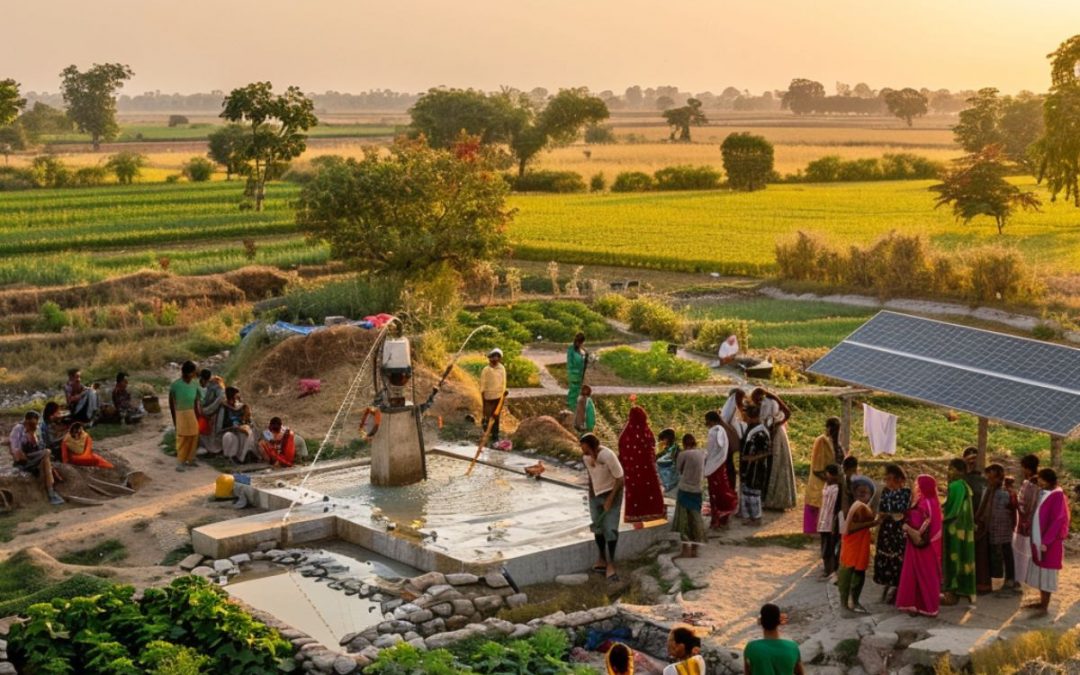How can a country truly progress when its people are denied the most basic human necessity? This haunting question echoes across rural India, where the stark reality of water and sanitation challenges continues to undermine the health, dignity, and economic prospects of millions. Despite India’s rapid technological advancements and urban growth, the plight of these rural communities raises a critical issue: Why do so many still lack access to clean water and proper sanitation? This disparity not only affects their immediate well-being but also stifles the broader development potential of the nation
The Silent Crisis
Water is life, but for many in rural India, access to clean water remains a distant dream. Women and children often walk miles to fetch water from distant sources, a task that consumes their time and energy, which could otherwise be used for education or productive work. The water they bring home is often contaminated, leading to a plethora of water-borne diseases such as cholera, diarrhea, and dysentery. According to reports, over 70% of India’s rural water supply is contaminated, posing severe health risks to the population.
The Impact of Poor Sanitation
Sanitation is an equally pressing issue. The absence of proper sanitation facilities forces many to practice open defecation, which contaminates water sources and spreads diseases. The lack of toilets particularly affects women and girls, compromising their safety and dignity, and often leading to a high dropout rate among schoolgirls. The social stigma and health issues associated with poor sanitation practices continue to perpetuate a cycle of poverty and disease.
Community-Led Solutions
Addressing these challenges requires a multi-faceted approach, combining government initiatives, community involvement, and innovative solutions. The Swachh Bharat Abhiyan (Clean India Mission) launched by the Indian government aims to eliminate open defecation and improve solid waste management. While the mission has made significant progress, the participation of local communities is crucial for its long-term success.
One inspiring example is the village of Hiware Bazar in Maharashtra. Through collective effort and effective water management practices, the village transformed from a drought-prone area to a model of water conservation. The villagers constructed check dams, trenches, and percolation tanks, which recharged groundwater and ensured a consistent water supply. This initiative not only provided clean drinking water but also improved agricultural productivity, leading to economic prosperity.
Technological Innovations
Technology plays a vital role in bridging the water and sanitation gap. The deployment of low-cost water purification systems and mobile applications for monitoring water quality can make a significant difference. Solar-powered water pumps and rainwater harvesting systems can provide sustainable solutions to water scarcity. Additionally, innovative toilet designs that are affordable and easy to maintain can encourage more widespread use and improve sanitation standards.
Leveraging the Internet
The internet can significantly enhance these efforts by connecting remote villages to resources, information, and support. Here are several ways in which internet provision can aid in addressing water and sanitation challenges:
- Real-Time Monitoring and Management: Internet-connected sensors can monitor water quality and supply in real-time, providing crucial data that can help manage water resources more efficiently. These sensors can detect contaminants and alert authorities to potential issues before they become widespread problems.
- Educational Platforms: Online educational platforms can offer training and resources to local communities about water conservation, sanitation practices, and the maintenance of sanitation facilities. Interactive modules and video tutorials can be particularly effective in educating villagers who may have limited access to traditional educational resources.
- Mobile Health Applications: Health apps can provide information on hygiene and sanitation, track health trends, and offer telemedicine services. This can be especially beneficial in rural areas where access to healthcare is limited. These apps can also help in reporting outbreaks of water-borne diseases, enabling quicker response and containment.
- Crowdsourcing Solutions: Online platforms can facilitate crowdsourcing of solutions and innovations tailored to local conditions. Communities can share their experiences and solutions, learn from each other, and collaborate on projects that improve water and sanitation facilities.
- Government and NGO Coordination: The internet can streamline the coordination between government agencies, NGOs, and local communities. It can facilitate the efficient allocation of resources, track progress, and ensure that initiatives are implemented effectively.
- Remote Monitoring and Maintenance: Internet connectivity allows for the remote monitoring and maintenance of water and sanitation infrastructure. This can include the use of drones to inspect water sources and sanitation facilities, reducing the need for physical presence and enabling quicker identification of issues.
- Community Engagement: Social media and other online platforms can be used to engage and mobilize communities. Awareness campaigns and educational content can be widely disseminated, encouraging community participation in maintaining water and sanitation standards.
Education and Awareness
Education and awareness are the bedrock of sustainable change. Informing communities about the importance of hygiene and the proper use of sanitation facilities can lead to behavioral shifts. Schools and local health workers can play a pivotal role in spreading this knowledge. When communities understand the health benefits of clean water and proper sanitation, they are more likely to adopt and maintain these practices.
A Call to Action
Ensuring clean water access and proper sanitation in rural Indian villages is not just a developmental goal; it is a moral imperative. It requires the concerted efforts of the government, non-governmental organizations, private sector, and, most importantly, the communities themselves. By investing in water and sanitation infrastructure, promoting innovative solutions, and fostering a culture of awareness and responsibility, we can turn the tide on this silent crisis.
Water and sanitation are the pillars of public health and dignity. As we strive towards a more equitable and prosperous future, let us not forget the rural heartland of India, where the seeds of real change must be sown. Together, we can ensure that every village has access to clean water and sanitation, paving the way for a healthier, more empowered rural India.

